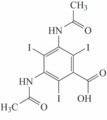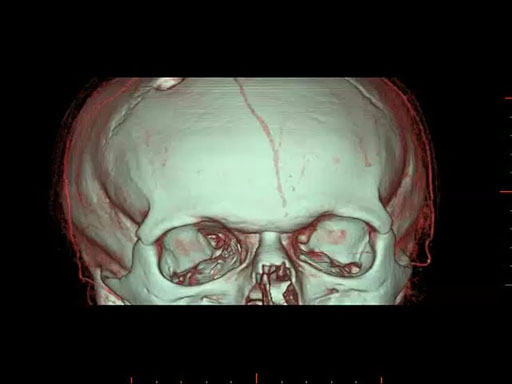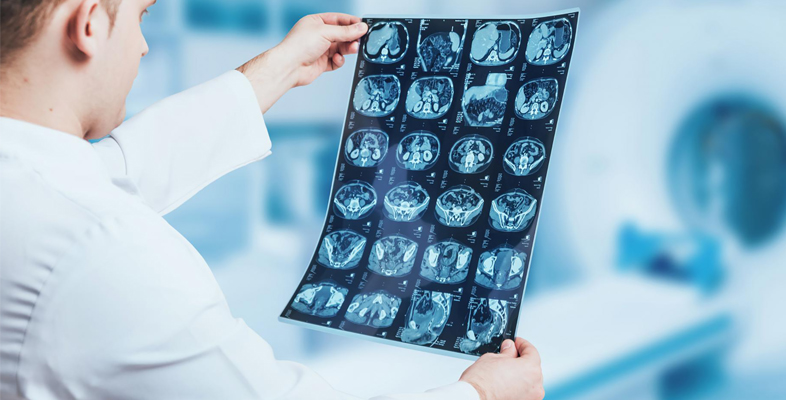Other X-ray contrast agents
An alternative to barium sulfate for imaging of the gastro-intestinal tract is a tri-iodinated benzenoid compound which goes under the trade name Gastrografin® (Structure 1). Iodine is also used in intravenous contrast agents for imaging blood vessels and organs such as the heart (angiogram).

Polymetallic tungsten complexes such as K3[PW12O40] have also been investigated for some applications.
-
Why do you suppose that such compounds are being studied as contrast agents?
-
Iodine and tungsten are heavy elements, so compounds containing a number of these atoms will absorb X-rays well.
-
When having an X-ray taken, you are asked not to use talcum powder (a magnesium silicate) or antiperspirant (typically containing aluminium and often zirconium) on the day of the appointment. Why might this be so?
-
Magnesium, silicon, aluminium and zirconium are heavier elements than those contained in body tissue, and so show up as spots on the image where they absorb the X-rays.
Now watch the following short video which shows a CT scan of the head using a tri-iodated contrast agent. In this example, the contrast agent has been preferentially taken up in the blood.

